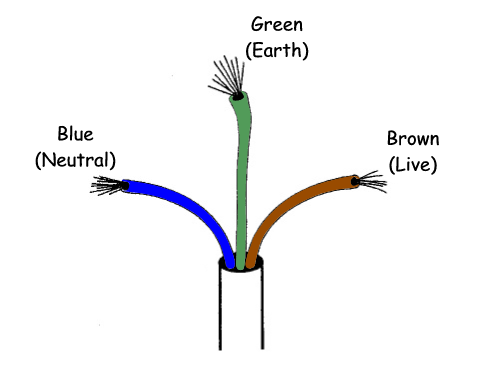Which Color is Used for Neutral Wire?
Introduction: The Chromatic World of Wires
Amidst the prevailing epoch where digital dominion prevails, weaving a labyrinthine tapestry enmeshing our existence, scant attention is accorded to the unseen sinews vivifying our realm. Wires—lurking in clandestine recesses, burrowing beneath our tread, coursing through the very apparatus you manipulate at this juncture. Still, what cognizance do we genuinely harbor regarding them? Amongst these undulating conduits, an entity distinguishes itself—not by flamboyant display, but by its understated grandeur and tacit prominence: the neutral wire.

To the uninitiated, wires might merely represent 'vibrant enigmas veiled behind the screen', yet each tint harbors an intent, an anecdote, an axiom. This day, we venture into the labyrinth of electrical sinews, elucidating tales of chromatic ciphers, the logic beneath, and the protagonist of our narrative—the neutral wire. Hence, brace yourself to decode: the neutral wire dons which shade?
Neutral Wire is What Color? - At its core, the neutral wire is typically recognized by its white or gray color in many electrical systems. But why such a muted color for such an essential wire?
Decoding the Color Code
Colors aren't just for fun; they're systematic tags in electrical setups. Wires are color-coded to prevent dangerous mistakes. Understanding the underlying logic can be as satisfying as finishing a jigsaw puzzle.
White or Grey: Generally represents the neutral wire.
Black, Red, Blue: Hot wires, which carry electricity from the source.
Green or Bare: The ground wire, a safety tool.
Across the Pond: International Variations
Alright, so if you thought, "Hey, it's just white or gray; end of story!" – pump the brakes! When you hop on over to different continents, the story can change.
In the UK, for example, the neutral wire is blue.
In Australia, it's black or blue.
The European Union also designates blue for the neutral wire.
Why these differences, you ask? Each region has its historical and technical reasons, stemming from standards established long before our digital age.
Why Not a Brighter Color?
Here's a fun thought: if this wire is so crucial, why not paint it neon? Well, subdued colors like white or grey help it stand out amidst the vibrant hues of other wires, ensuring that electricians can spot it without being dazzled.
The Role and Importance of the Neutral Wire
Ever wondered why it's called "neutral"? Does it play Switzerland in the grand politics of electrical circuits? Kind of!
Balancing Act: Completing the Circuit : The neutral wire serves as a pathway for the current to return. Without it, there's no complete circuit, and electricity can't flow consistently.
Safety First: Preventing Shocks and Fires: This unassuming wire also acts as a safety barrier. If there's an imbalance in the circuit – say, because of a faulty appliance – the neutral wire helps redirect the excess current safely away, preventing potential shocks or fires.

When Things Go Awry: The Neutral Wire Misconceptions
Like a good Hollywood drama, our neutral wire story isn't without its villains – misconceptions!
It’s Not Always Safe to Touch: Many think, "It's neutral, so it must be safe." Wrong! If a circuit is live and you touch the neutral wire, there's a risk of a shock. Always turn off the main power before tinkering with wires.
Neutral and Ground are Not Interchangeable: Some DIY enthusiasts might think they can swap neutral and ground wires because they're both safe paths for current. Nope! They have distinct roles. Mixing them up can spell disaster.
Colorful Trivia: Did You Know?: For those of you who love some extra tidbits, here's a gem. Did you know the very first electrical codes were established in the late 1800s? And color codes became a thing only in the 1920s! Ah, the things we take for granted.
Wrapping It Up: The Neutral Wire Is Silent, Crucial Role
Receding from this realm and beholding the masterful ballet of cables around, one is struck by the juxtaposition of minimalism and convolution they usher. These filigree channels, from animating our dawn's brew to igniting our twilight, hold an indispensable berth. The neutral strand, frequently overshadowed by the din of its resplendent compatriots, epitomizes the unvoiced stalwarts laboring in obscurity.
While it may lack the flamboyance of a live conduit or the rustic resonance of an earth tether, its salience remains unchallenged. As every hue on a maestro's canvas enriches a creation's profundity, so do wires in our electrified matrix. Thus, kindred spirit, may your subsequent encounter with a rudimentary strand elicit perceptions of a rich chronicle, empirical wisdom, and refined craftsmanship. For in existence's grand overture, each resonance, or herein, each hue, bears significance.
